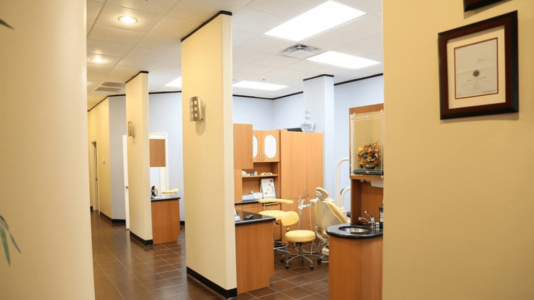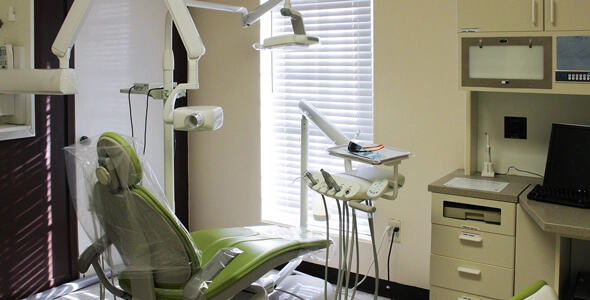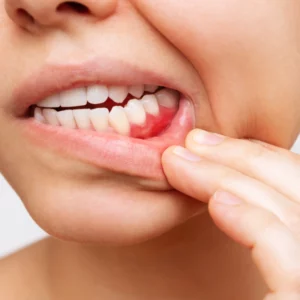Routine or preventative teeth cleaning is a quick and simple procedure in which between the teeth and above the gum line are cleaned and the teeth are polished. This maintains a healthy mouth and should be done twice a year. These routine visits to the dentist facilitate good oral health but are also good for the purpose of detecting early signs of more serious problems like cavities or gum disease.
The presence of calculus under the gum line creates the perfect environment for bacteria to collect and multiply. At that point buildup cannot be removed by brushing, flossing or with a regular cleaning. With signs of that serious issue present, your dentist may recommend periodontal cleaning, also known as a deep cleaning, scaling or root planing to remove bacteria, calculus (tartar), and debris that has collected under the gum. However, in more advanced cases a periodontal specialist may be required to treat the issue. Gum disease is diagnosed when an examination reveals one or more periodontal pockets, or areas where the gum has pulled away from the tooth, 4 millimeters deep or greater.
A lack of consistent and proper oral care; which includes brushing and flossing, long periods of time between regular professional dental cleanings, and other health conditions, such as diabetes, are likely to contribute to gum disease. Women who are pregnant may also experience temporary bouts of inflammation and gum disease which should be monitored by a dentist. If left untreated, the infection and inflammation will continue and progress further under the gum line, resulting in loose teeth and bone loss, and eventually, the loss of one or more teeth.
Periodontal cleanings begin with your dentist or hygienist typically numbing the affected area then carefully working under the gum line to clean away the calculus and debris. The final step involves your dentist carefully shaping, or planing, the root of the tooth to remove places where bacteria can collect in the future. After the procedure, your dentist should prescribe an antibiotic regimen, and may recommend an over-the-counter pain reliever if you are experiencing any discomfort or tenderness in the treated area.
Though easily treated, cured gum disease may still require you to make regular dentist visits. These visits are typically every 3 months in the beginning, to monitor the status of your teeth, gums and bone to ensure your gums have healed and the bacteria has not returned. The best advice however, is to ensure that a preventative approach is taken before periodontal treatment is necessary. That includes regular dental visits, brushing, flossing and a healthy diet.
The mission of Adental care is to help people achieve and maintain optimal health and this is the reason we provide our content, to help empower you with the knowledge of how good oral hygiene can affect your overall health. If you live in Houston, Texas area visit our website to see which of our locations is closest to you and schedule an appointment or free consultation. Don’t forget to share this article with your friends and family.












